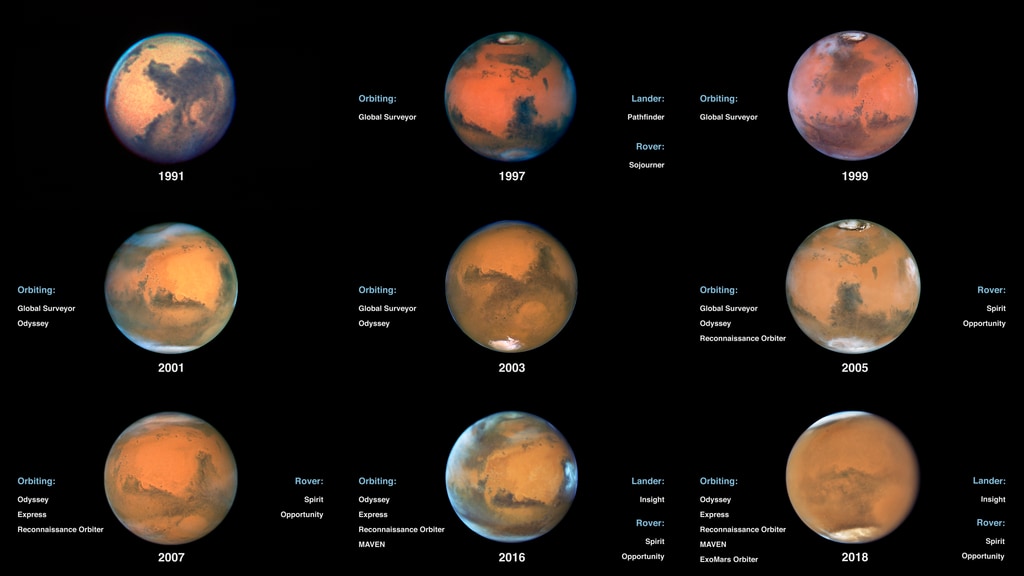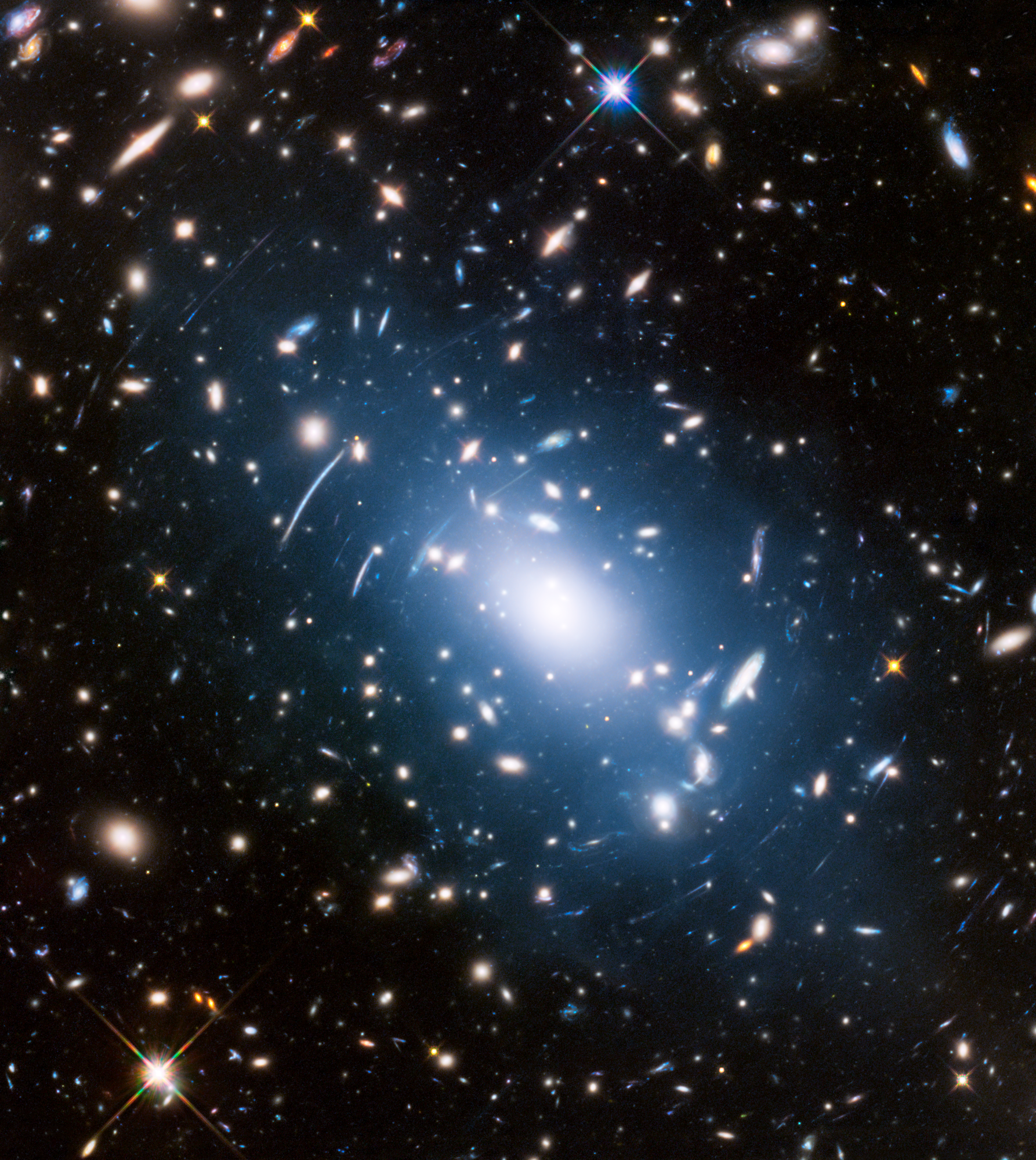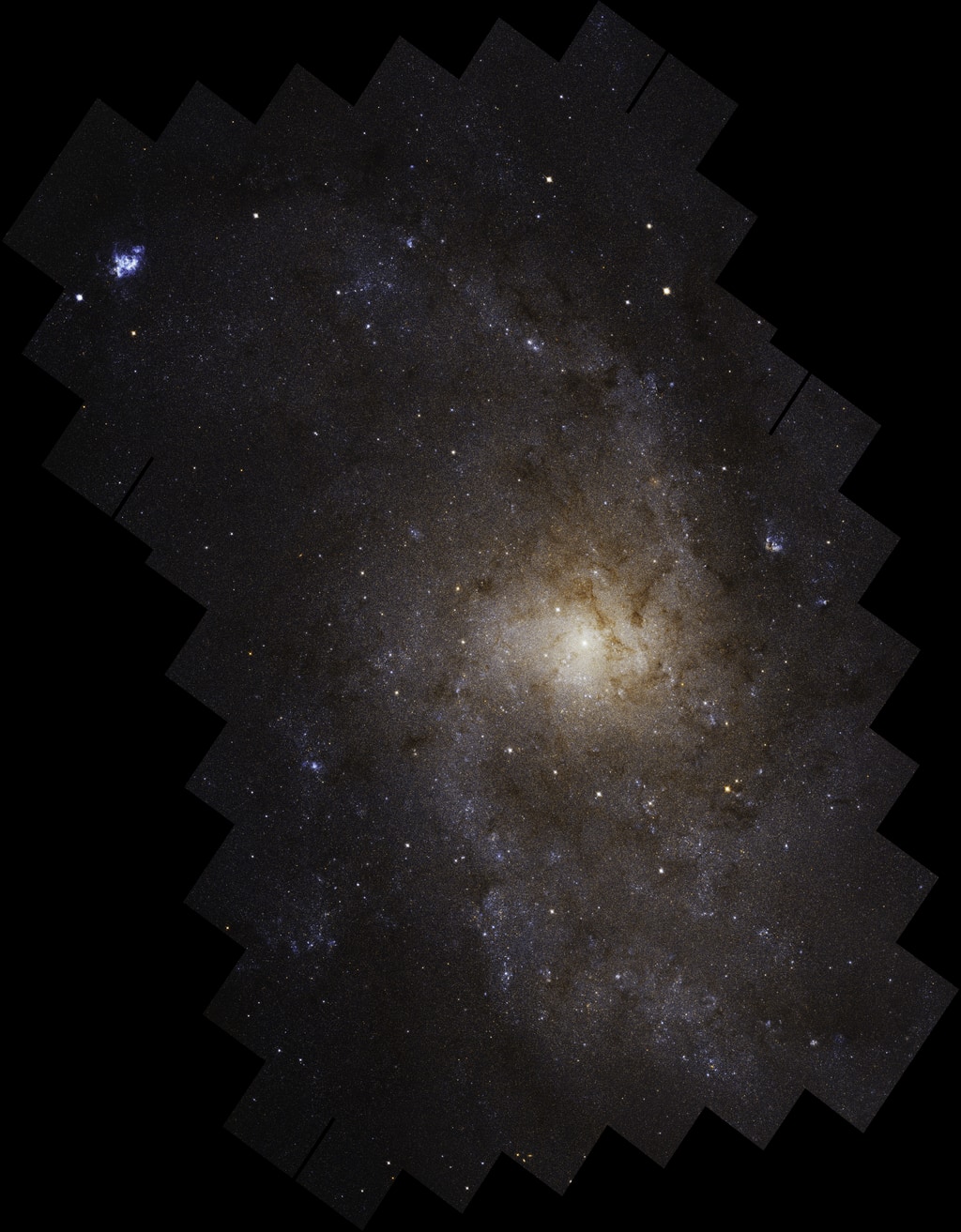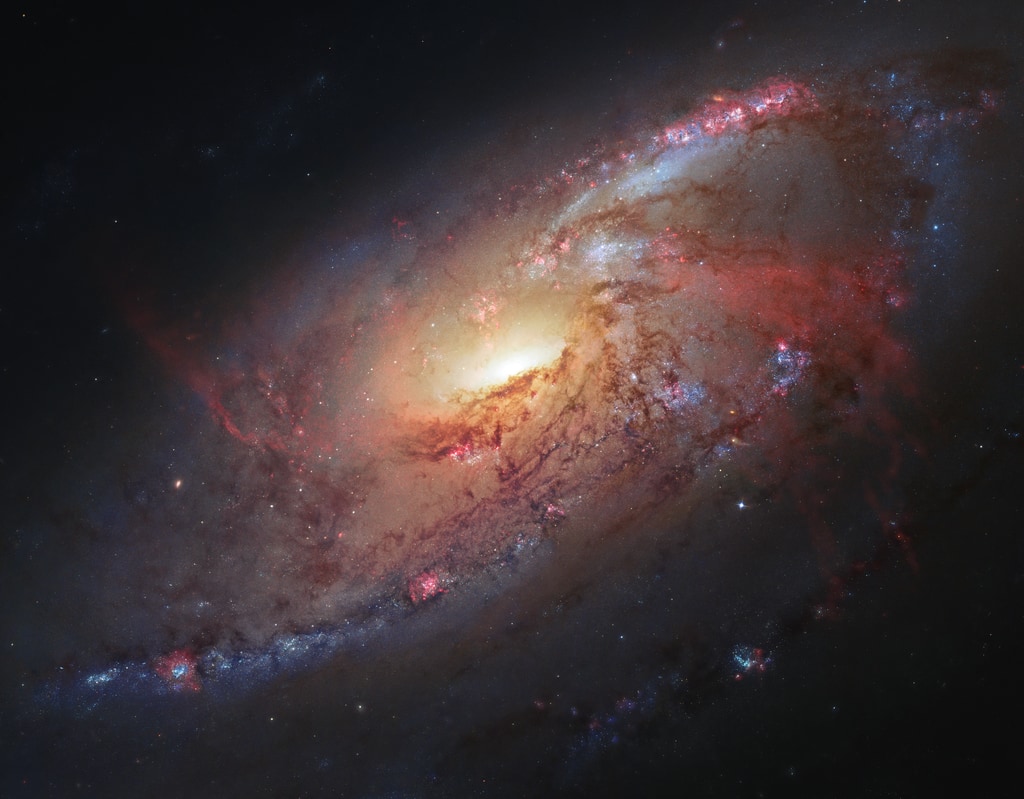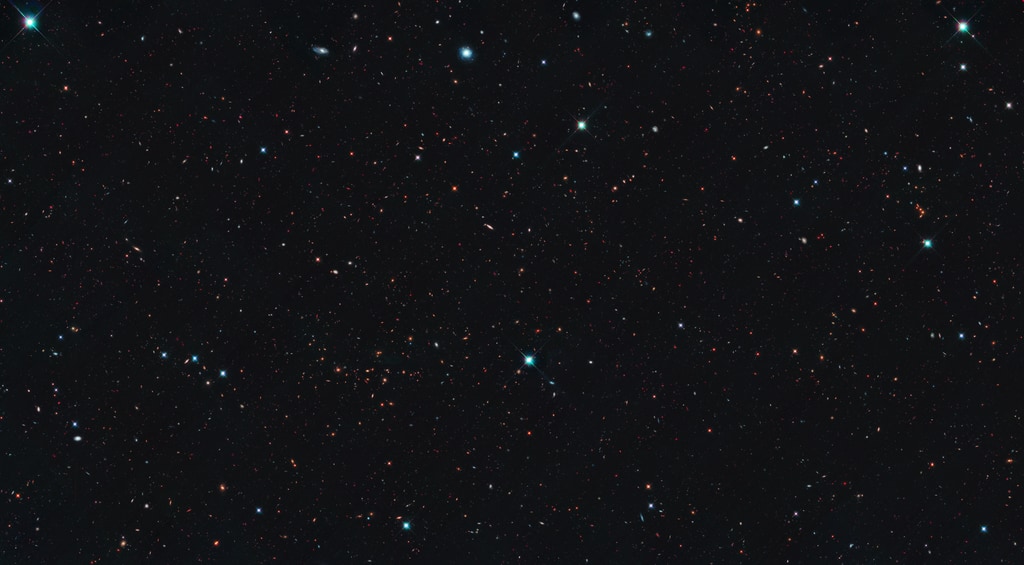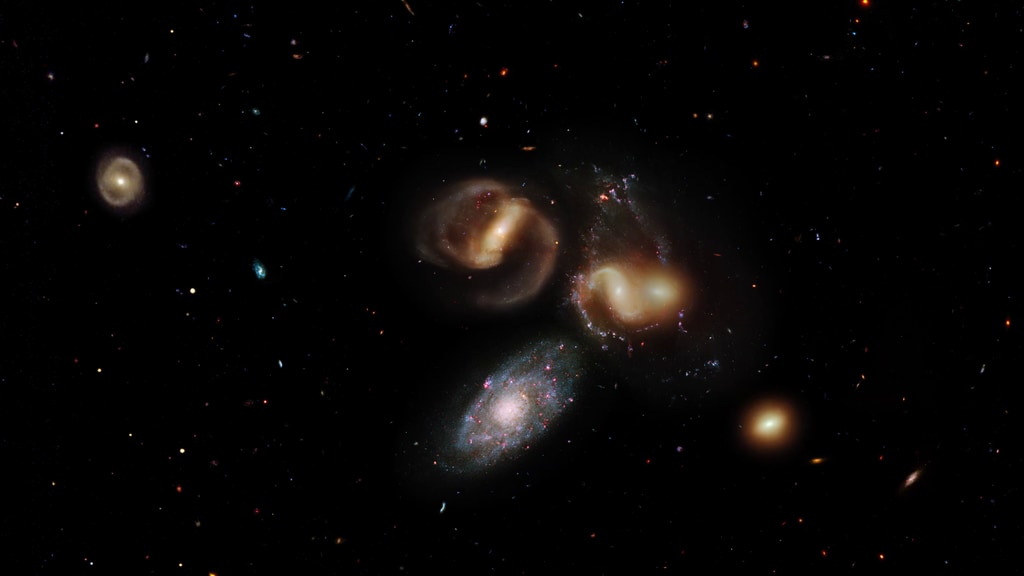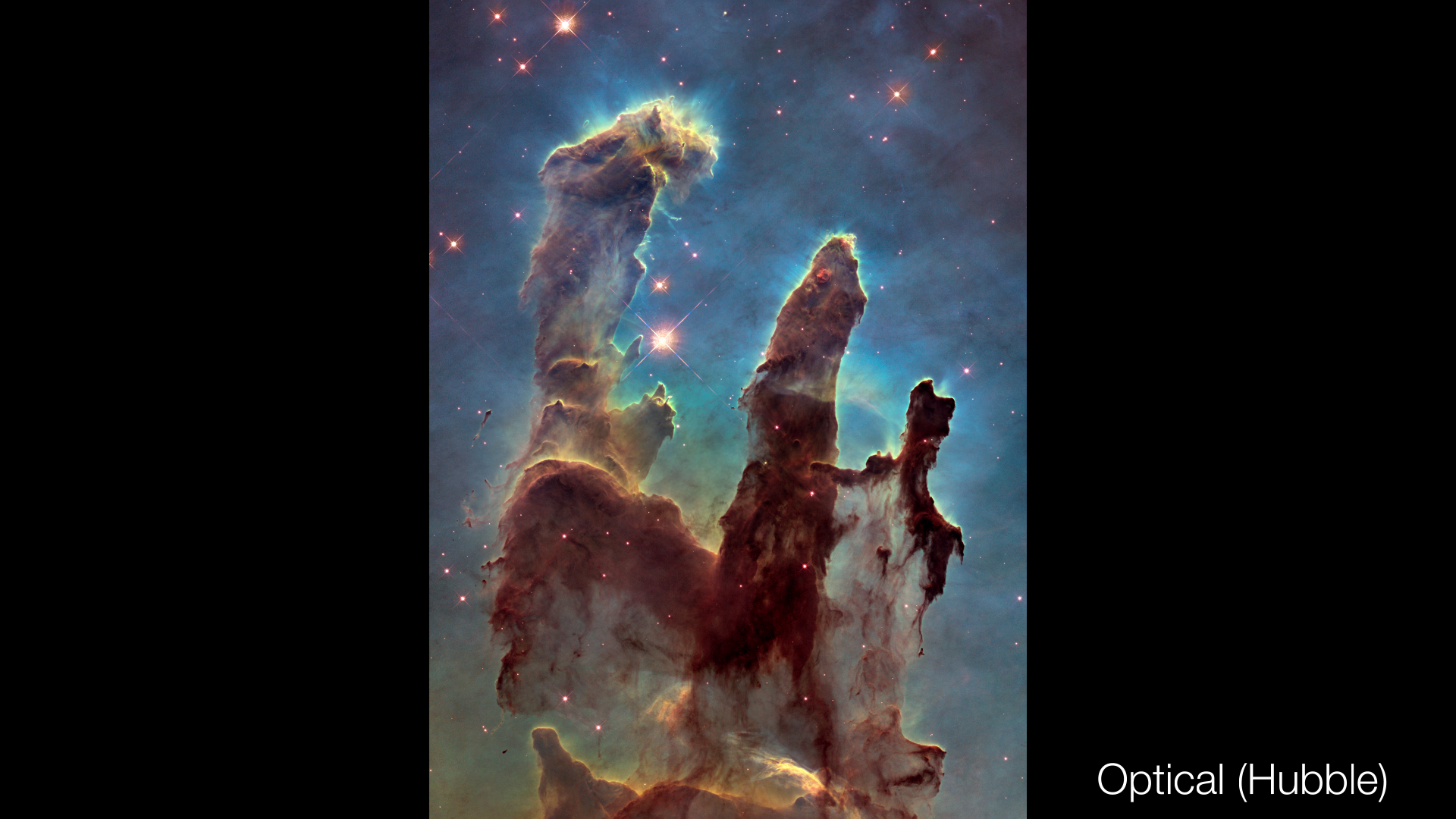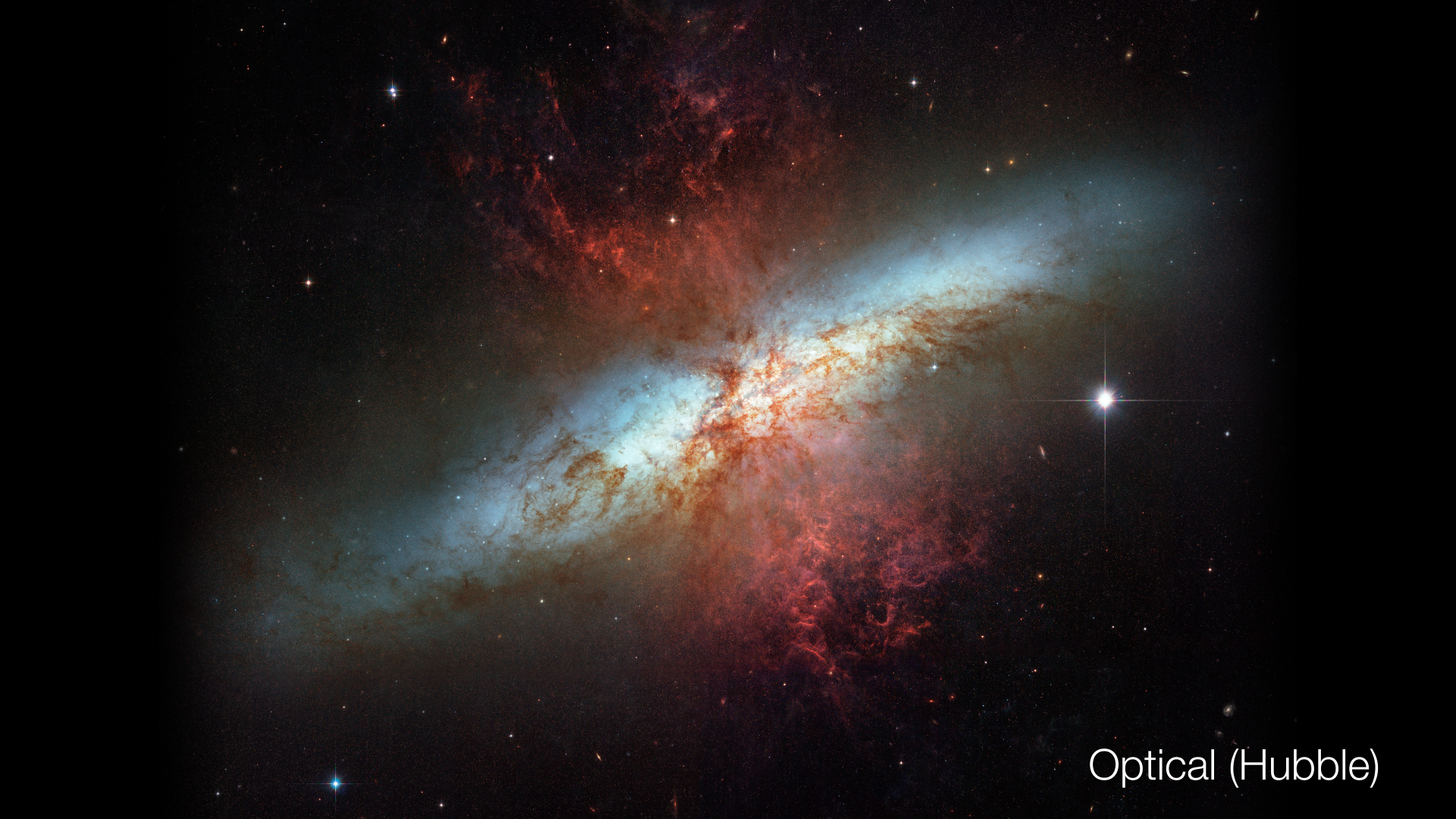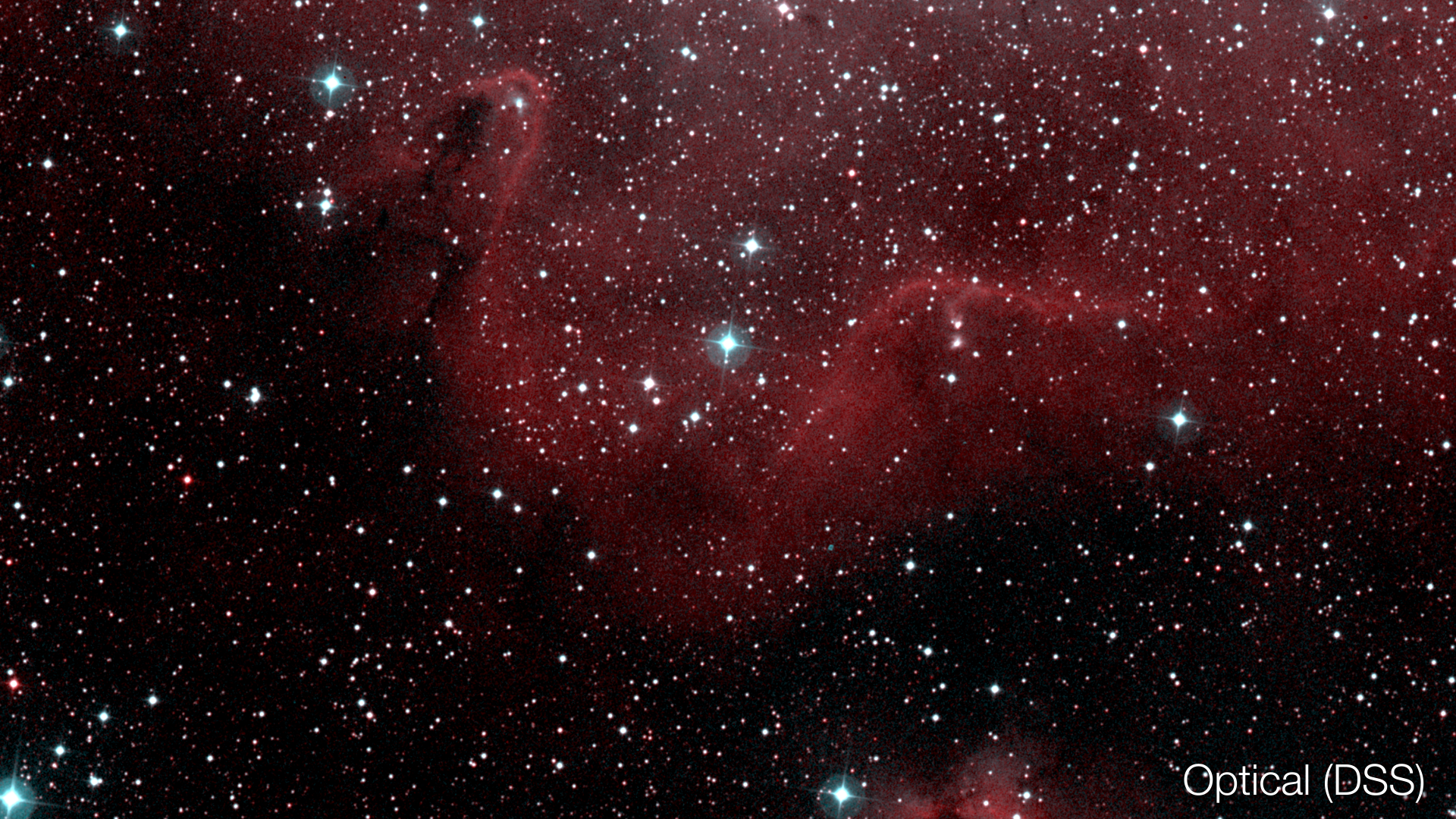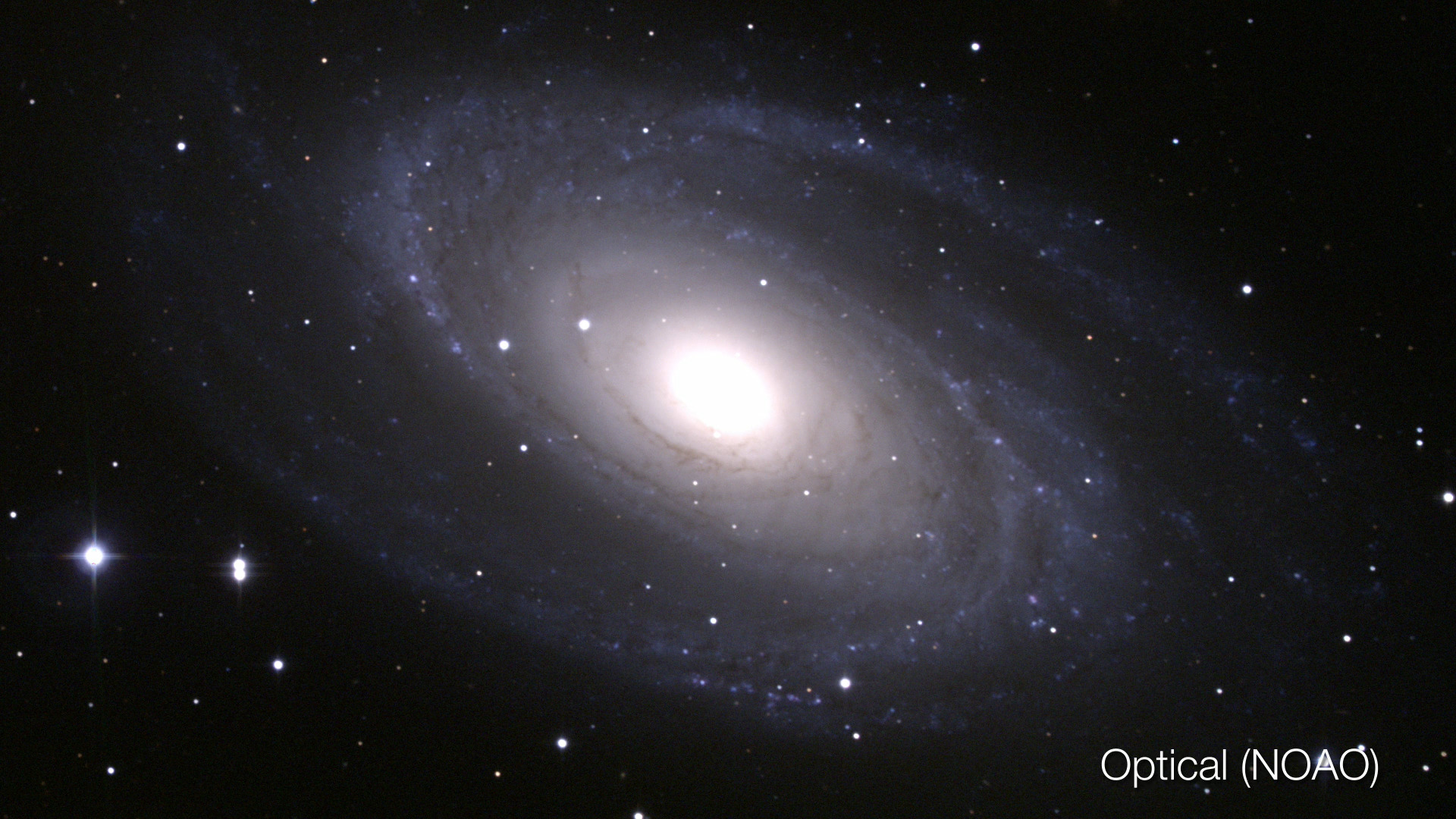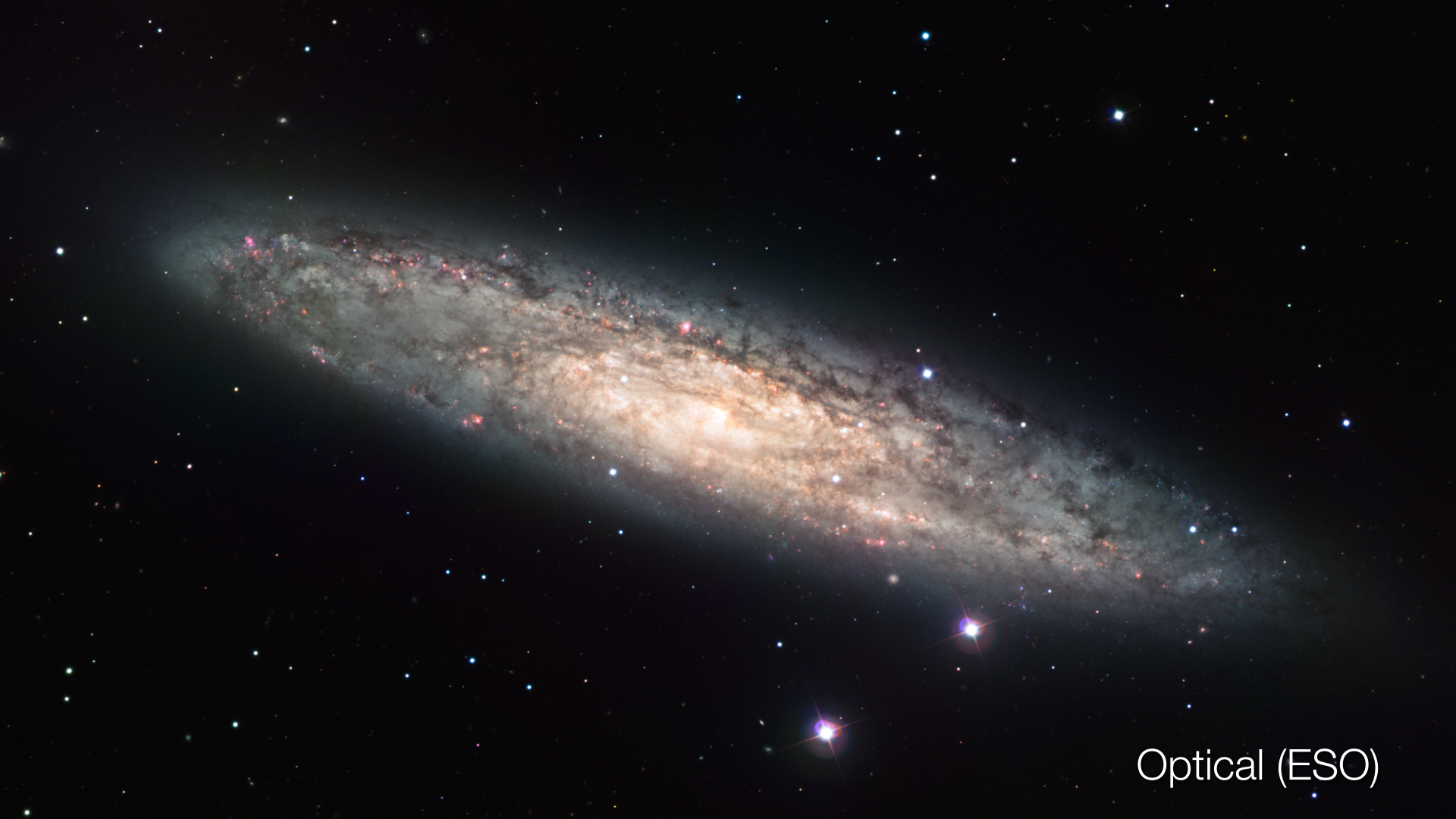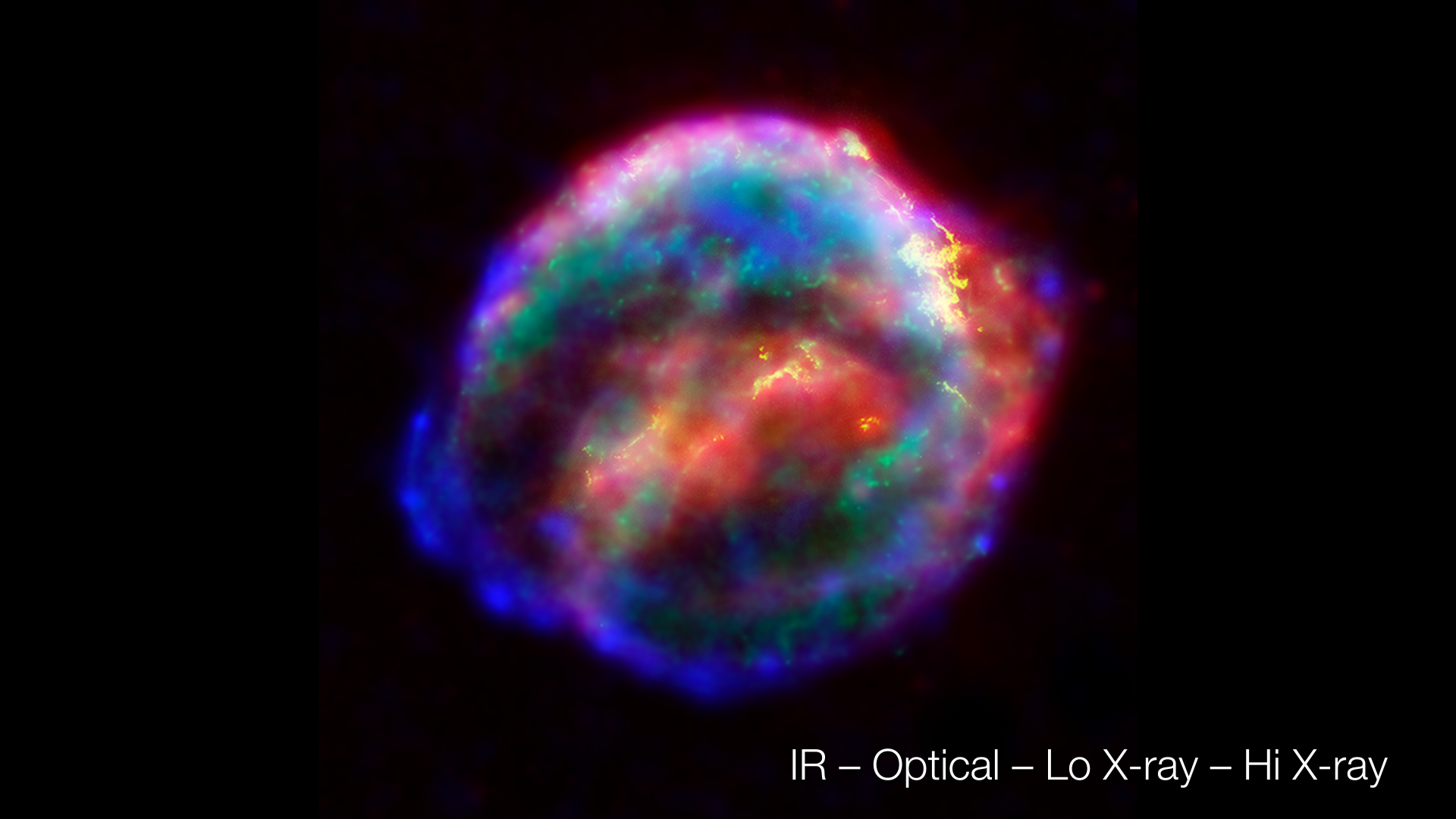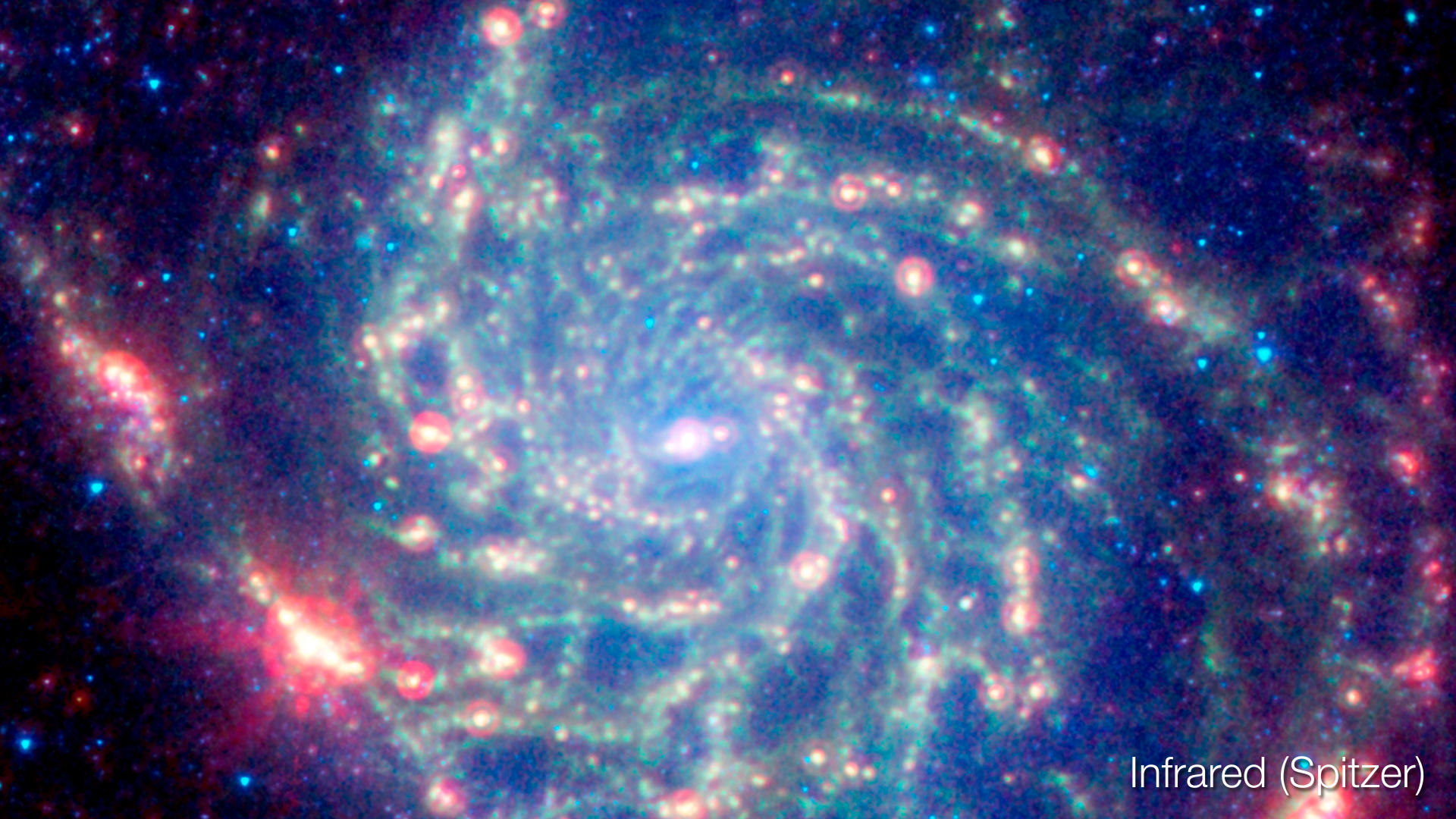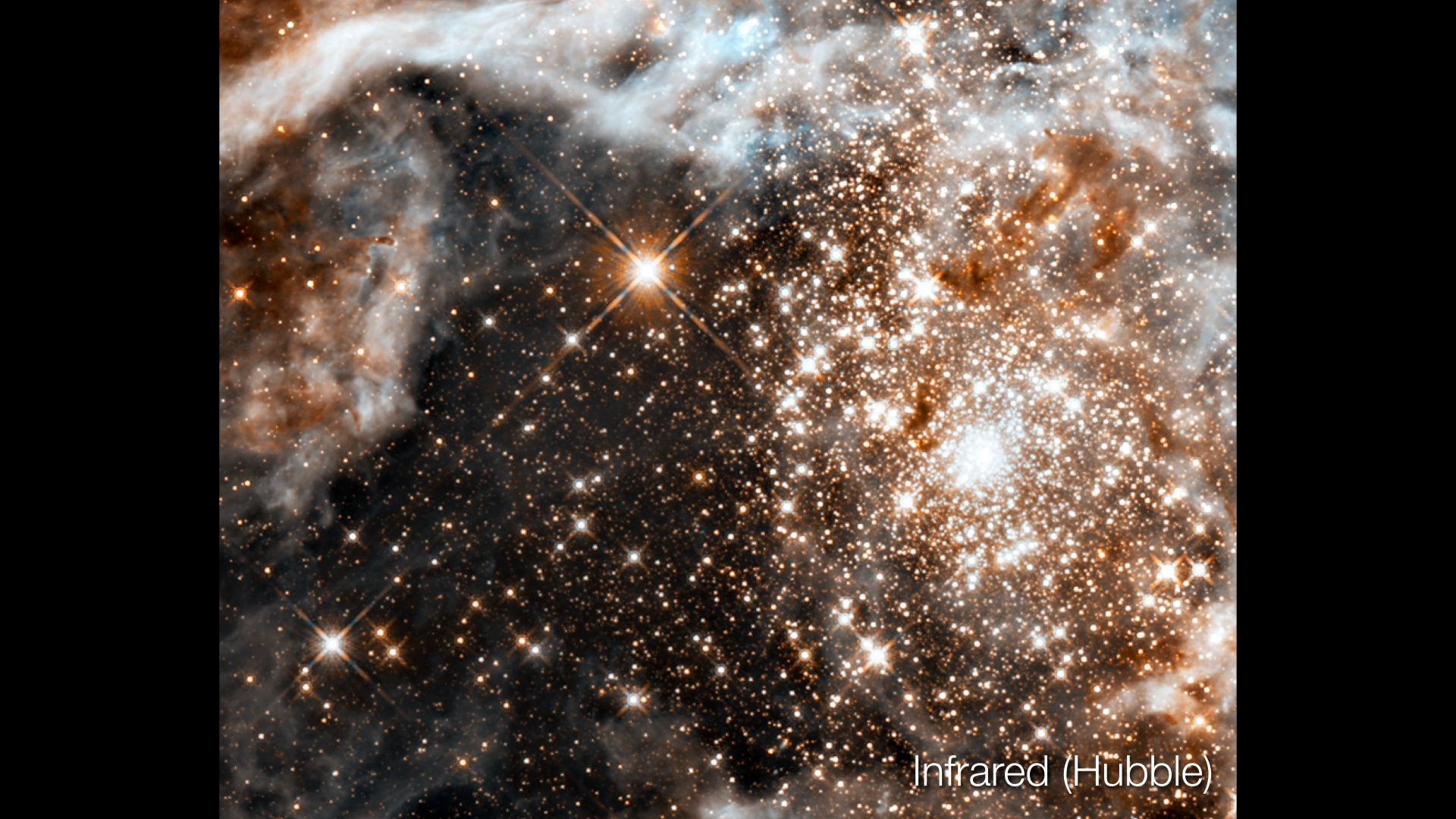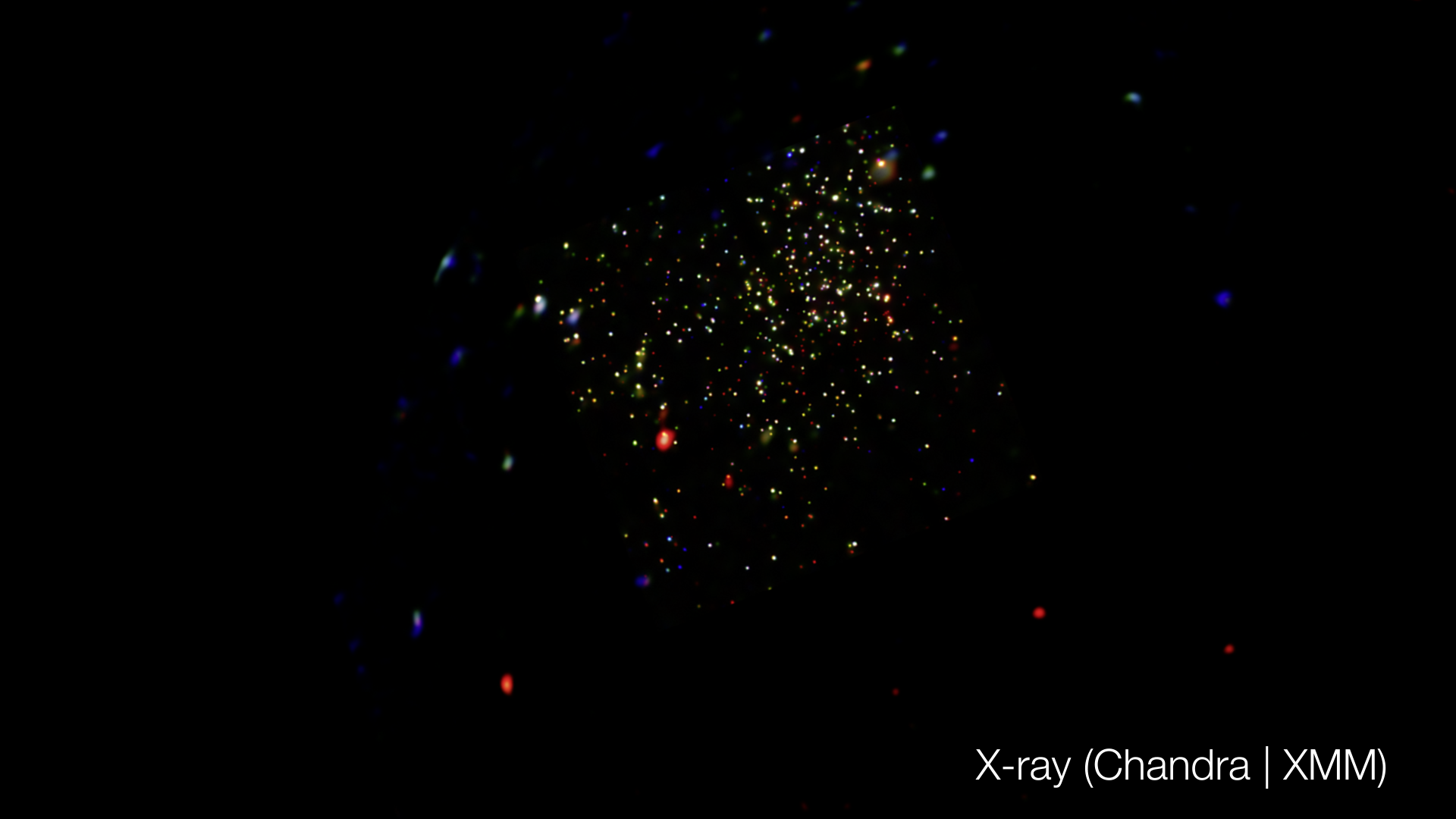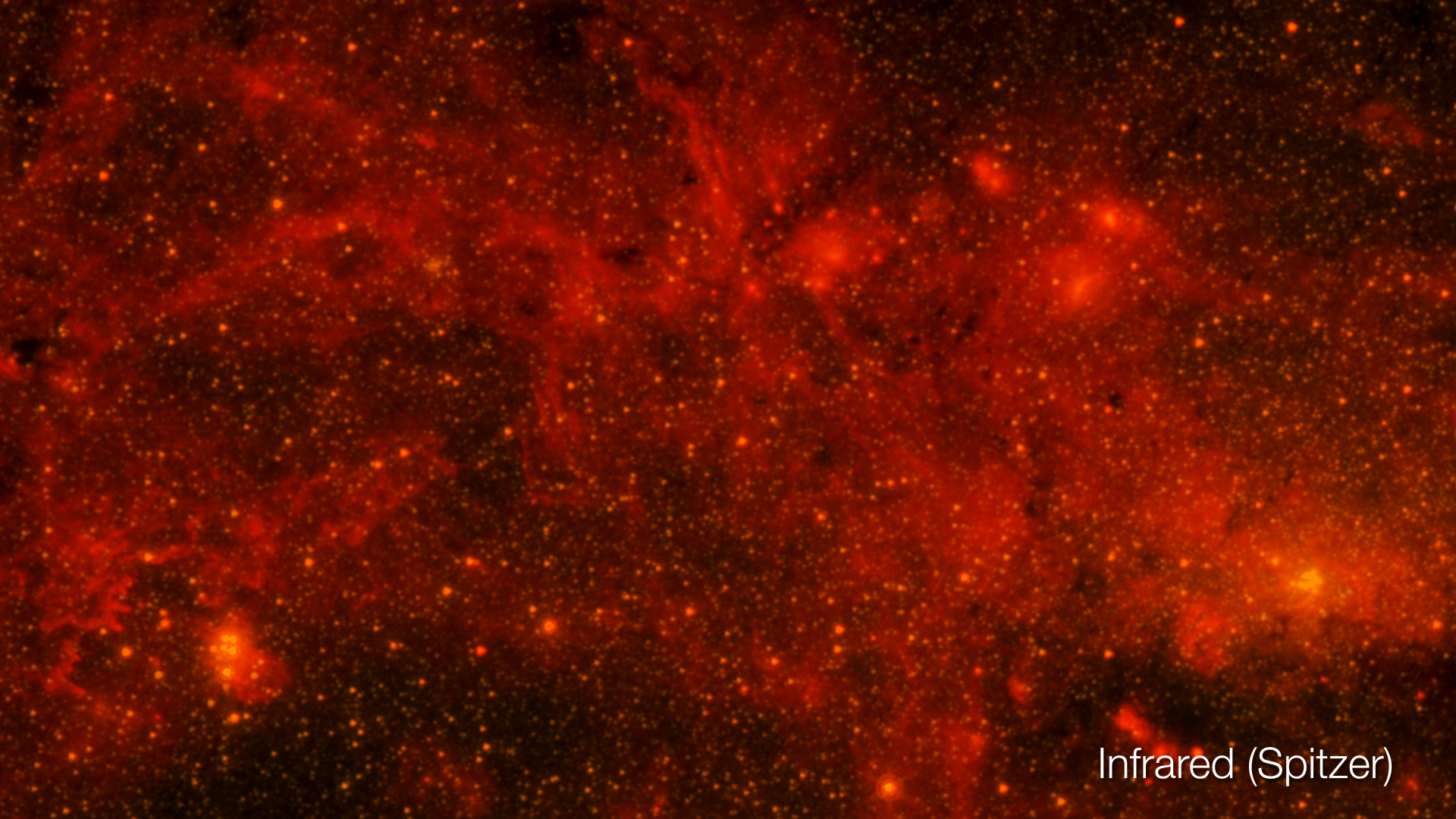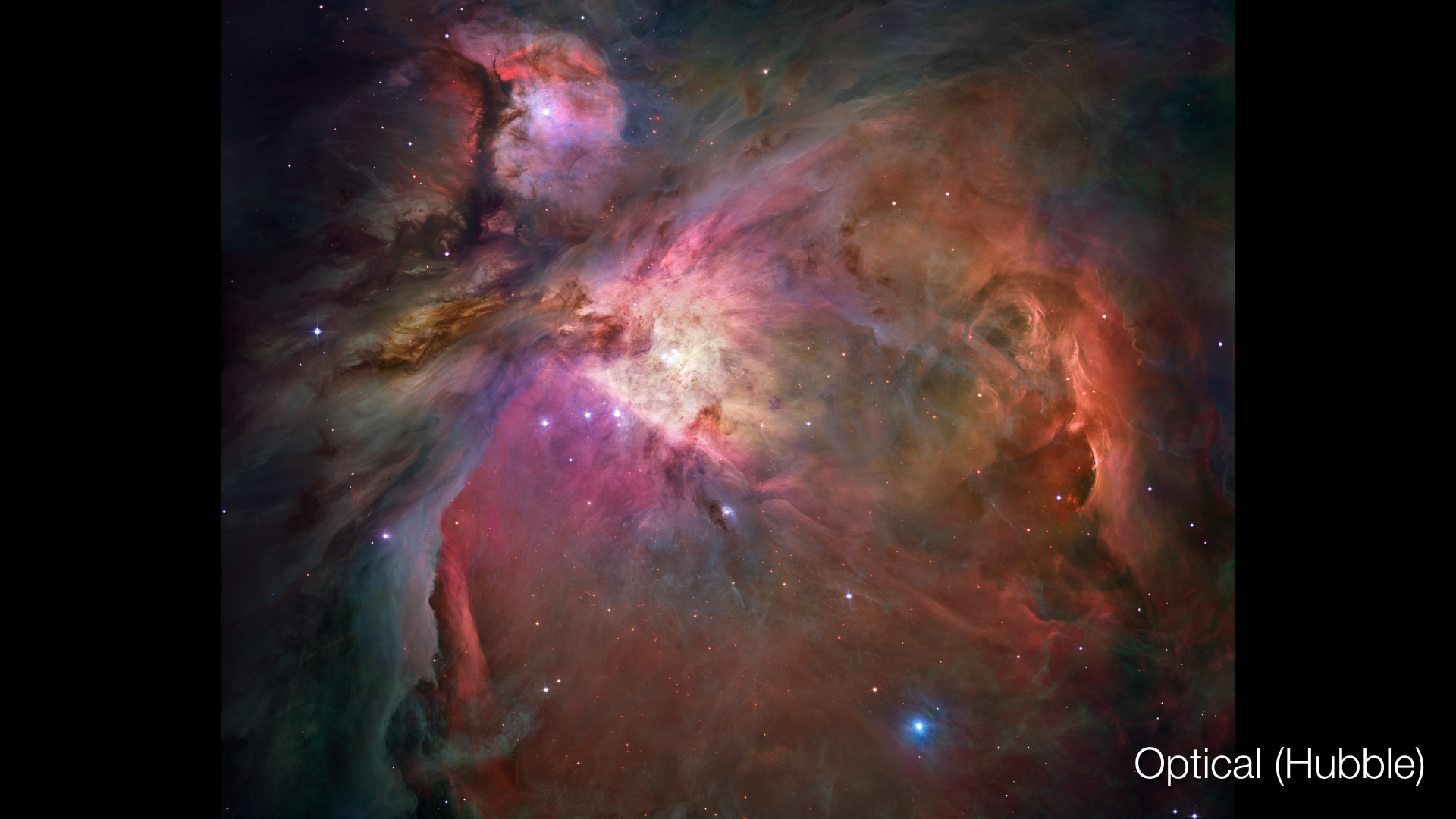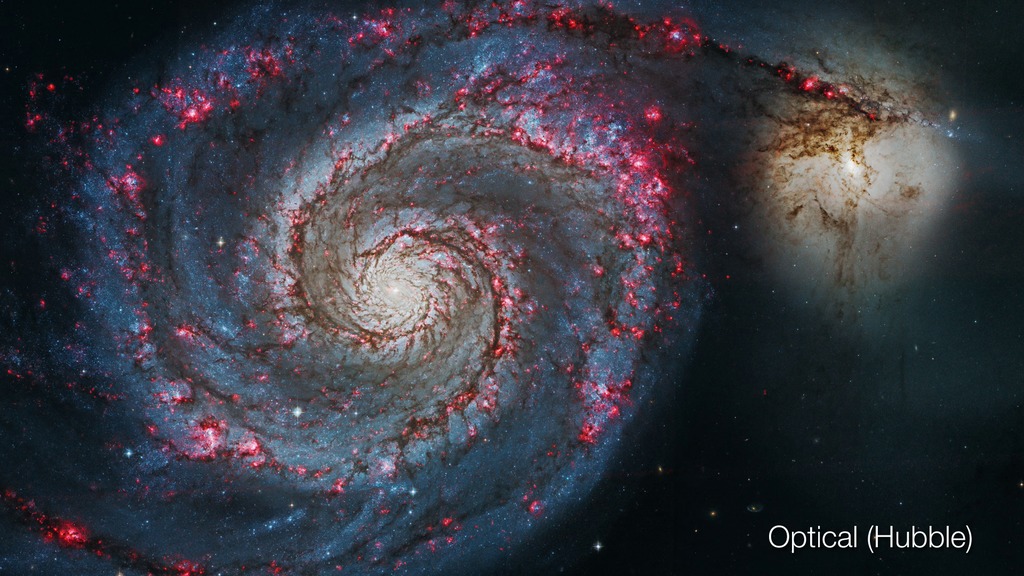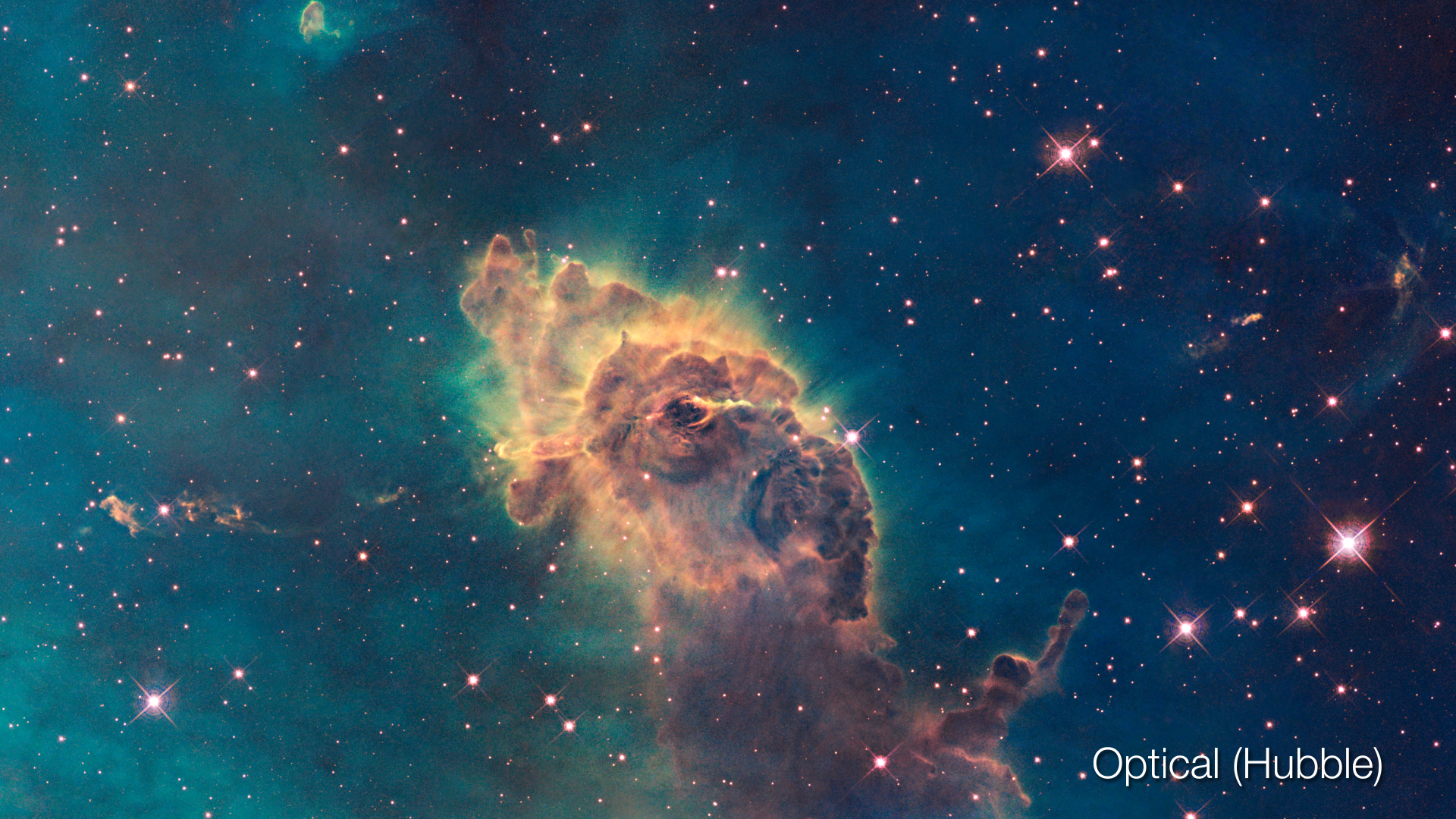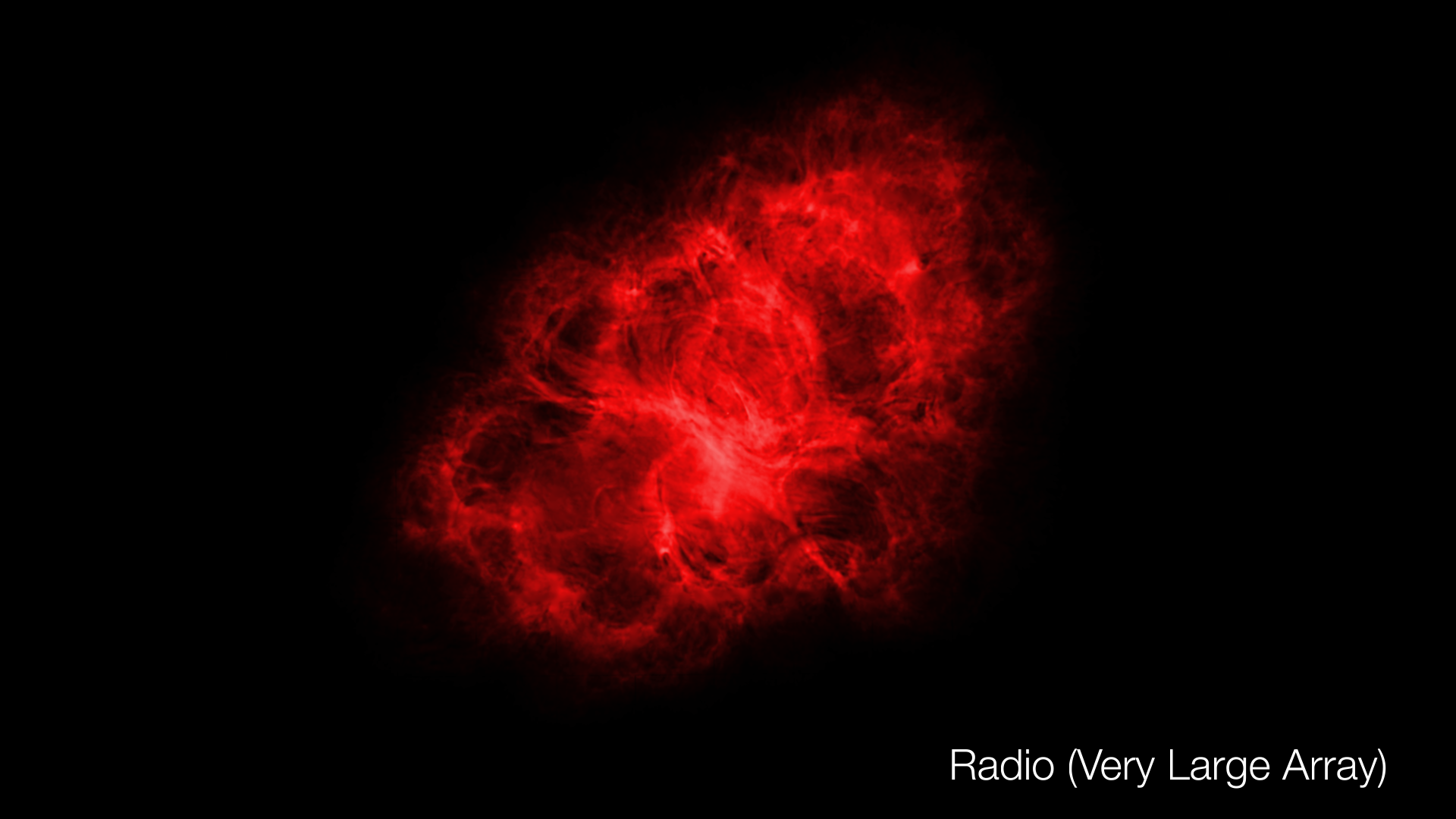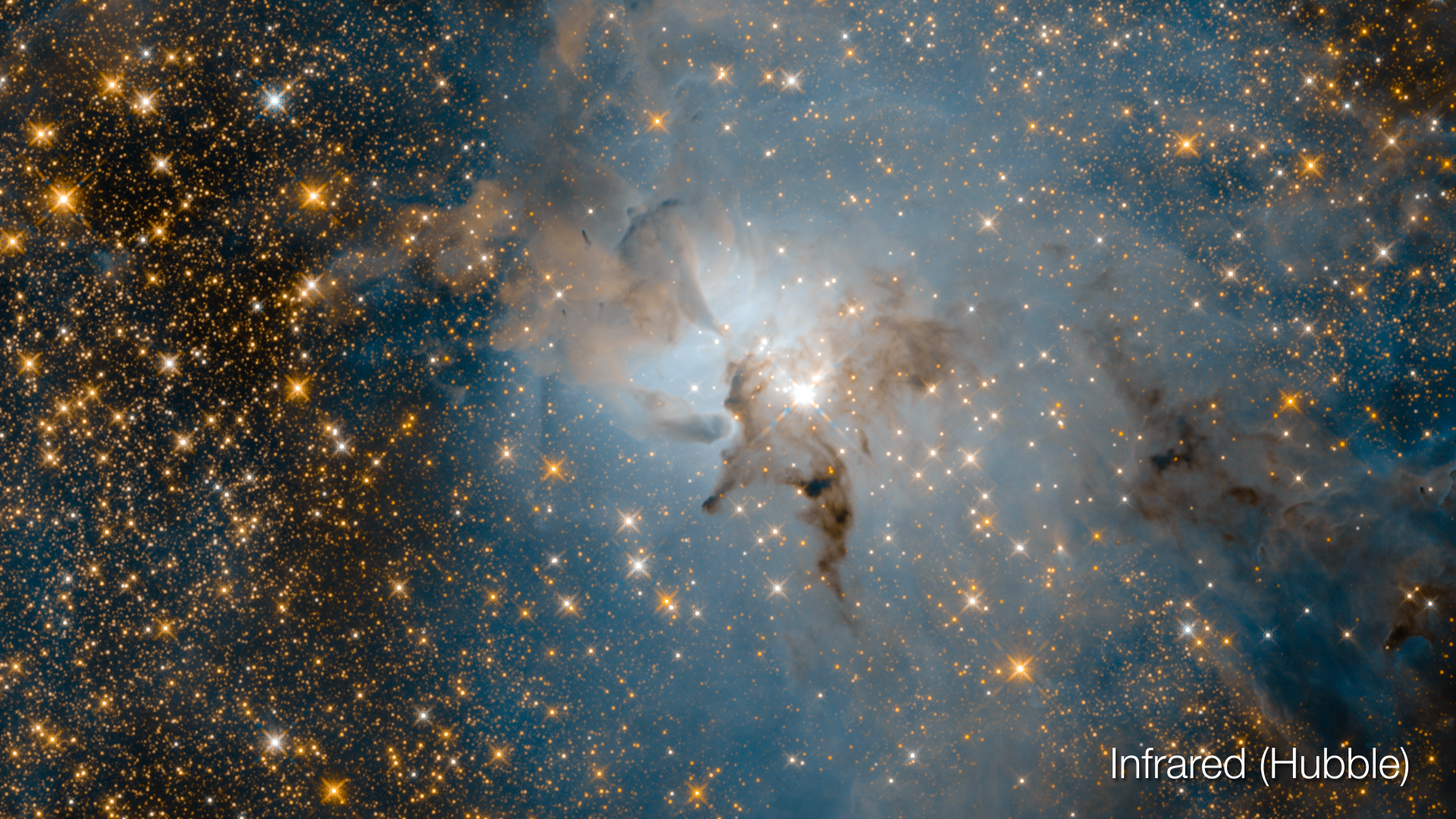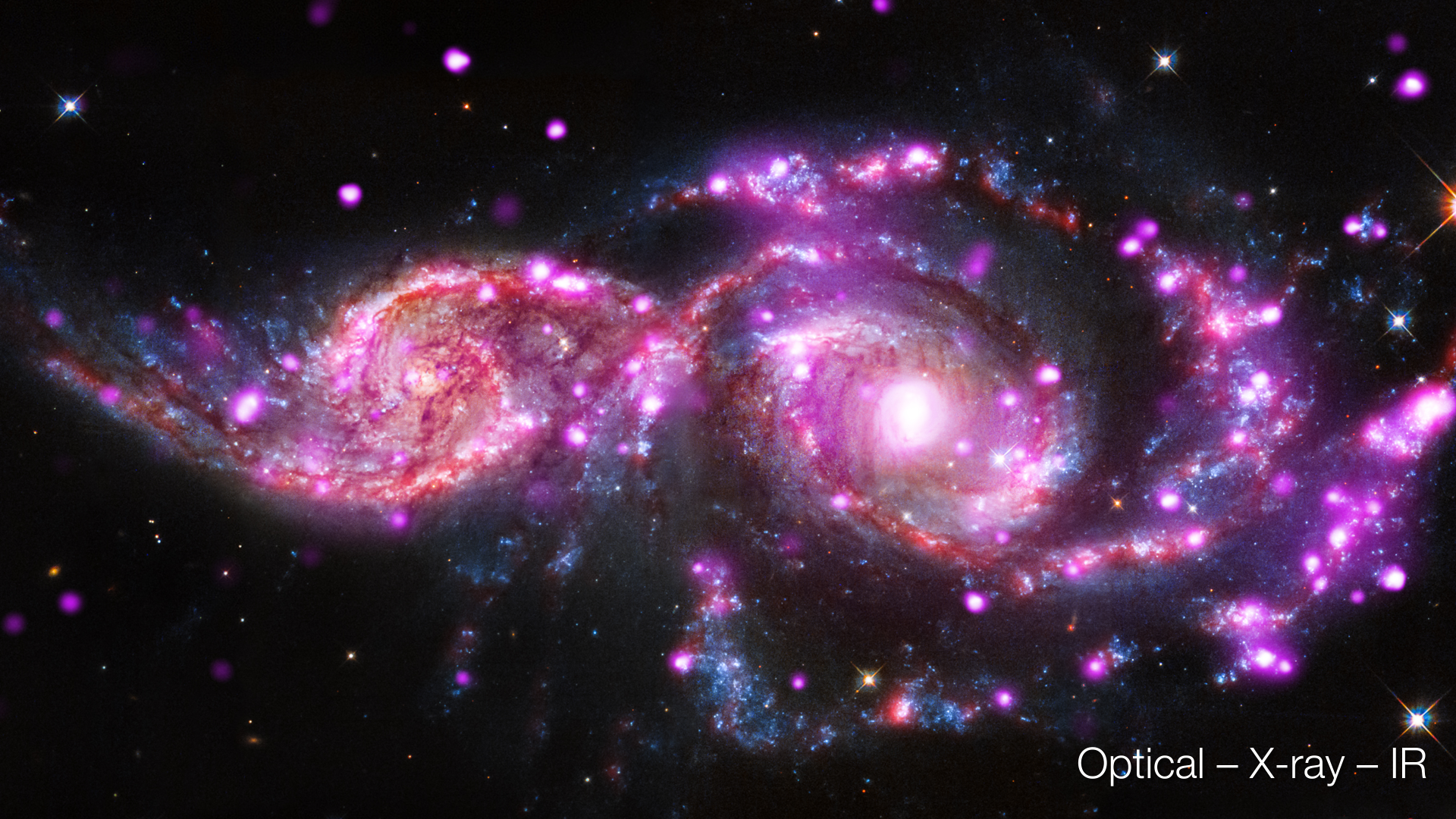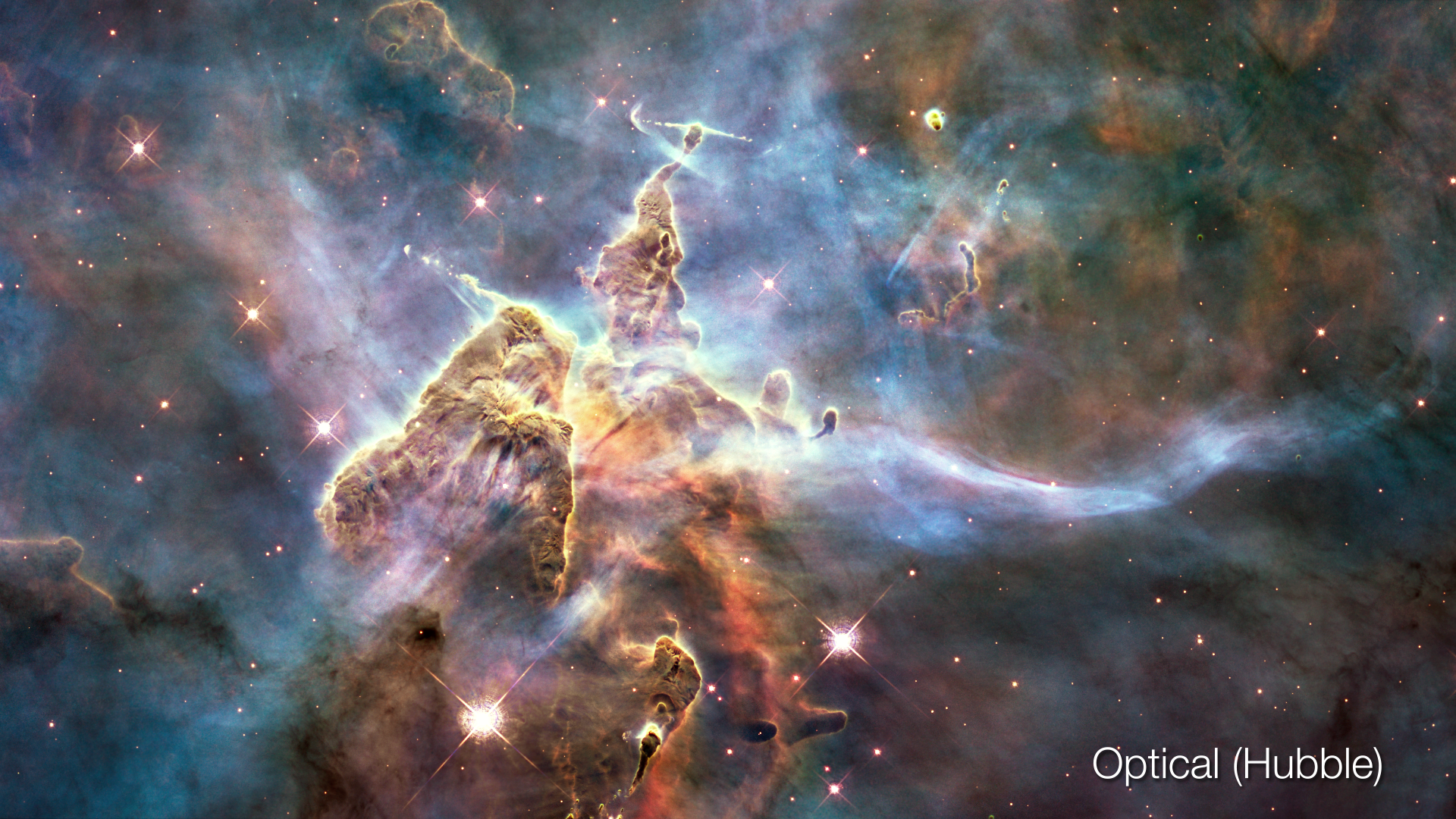Globular Star Clusters Scattered Between Galaxies
Hubble Space Telescope mosaic image of the Coma cluster of more than 1,000 galaxies, with 22,426 globular star clusters scattered in between.
Globular star clusters are snow-globe-shaped islands of several hundred thousand ancient stars—the oldest known in the universe. With its powerful high resolution, Hubble peered into the heart of the giant Coma cluster of galaxies, 300 million light-years away, and was able to capture a whopping 22,426 globular star clusters scattered between the galaxies. They have been flung out from their home galaxies due to galaxy near-collisions inside the traffic-jammed cluster. The image shows a span of space 2.2 million light years across. The distribution of the globular star clusters will help astronomers to map the distribution of matter and unseen dark matter in Coma.
This mosaic image was assembled from images in the Hubble archive, with help from college students in the National Science Foundation's Research Experience for Undergraduates program. A special computer program used the globular clusters' distinct reddish color—because of their old stars—and spherical shape to weed out background galaxies that showed up in the image but are not part of the Coma cluster.
Distinct areas without any green circles, like the triangle area left of center, show the edges of Hubble fields of view that were stitched together to make the mosaic; areas of the sky that were not imaged with the Hubble filters needed for this study do not include the green circles. In the future such efforts will not be needed however, because telescopes like WFIRST will be able to capture an image of the entire galaxy cluster all at once.
Hubble Space Telescope mosaic image of the Coma galaxy cluster, with green circles indicating the locations of globular star clusters, each containing several hundred thousand stars. Areas where the green circles are noticeably missing, like the triangle area left of center, show sections of the sky that the survey did not cover.
Credits
Please give credit for this item to:
NASA, ESA, J. Mack (STScI), and J. Madrid (Australian Telescope National Facility)
-
Visualizer
- Greg Bacon (STScI)
-
Image processing
- Jennifer Mack (STScI)
- Juan Madrid (Australian Telescope National Facility)
-
Technical support
- Leann Johnson (Global Science and Technology, Inc.)
Release date
This page was originally published on Monday, December 10, 2018.
This page was last updated on Monday, July 15, 2024 at 12:22 AM EDT.
Missions
This visualization is related to the following missions:Datasets used in this visualization
-
[Hubble Space Telescope]
ID: 831
Note: While we identify the data sets used in these visualizations, we do not store any further details, nor the data sets themselves on our site.
